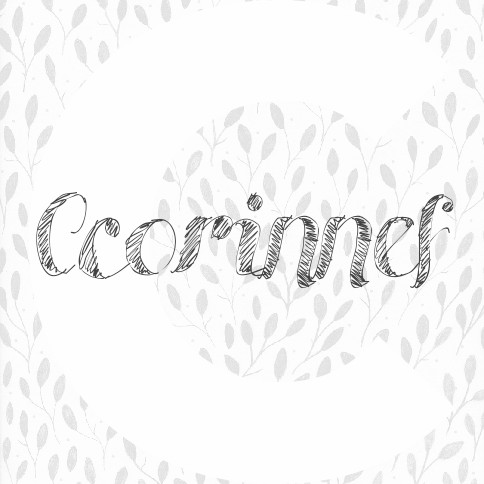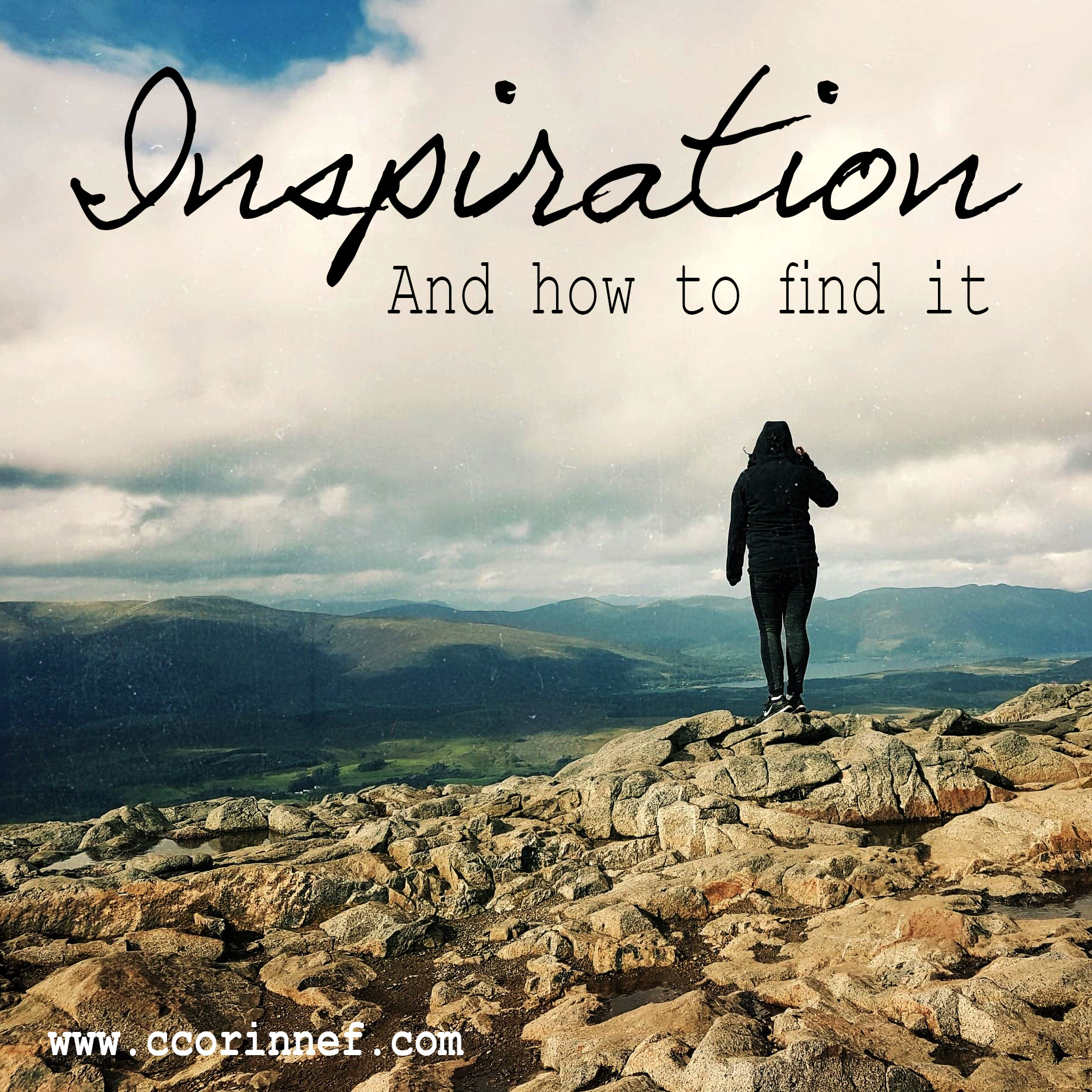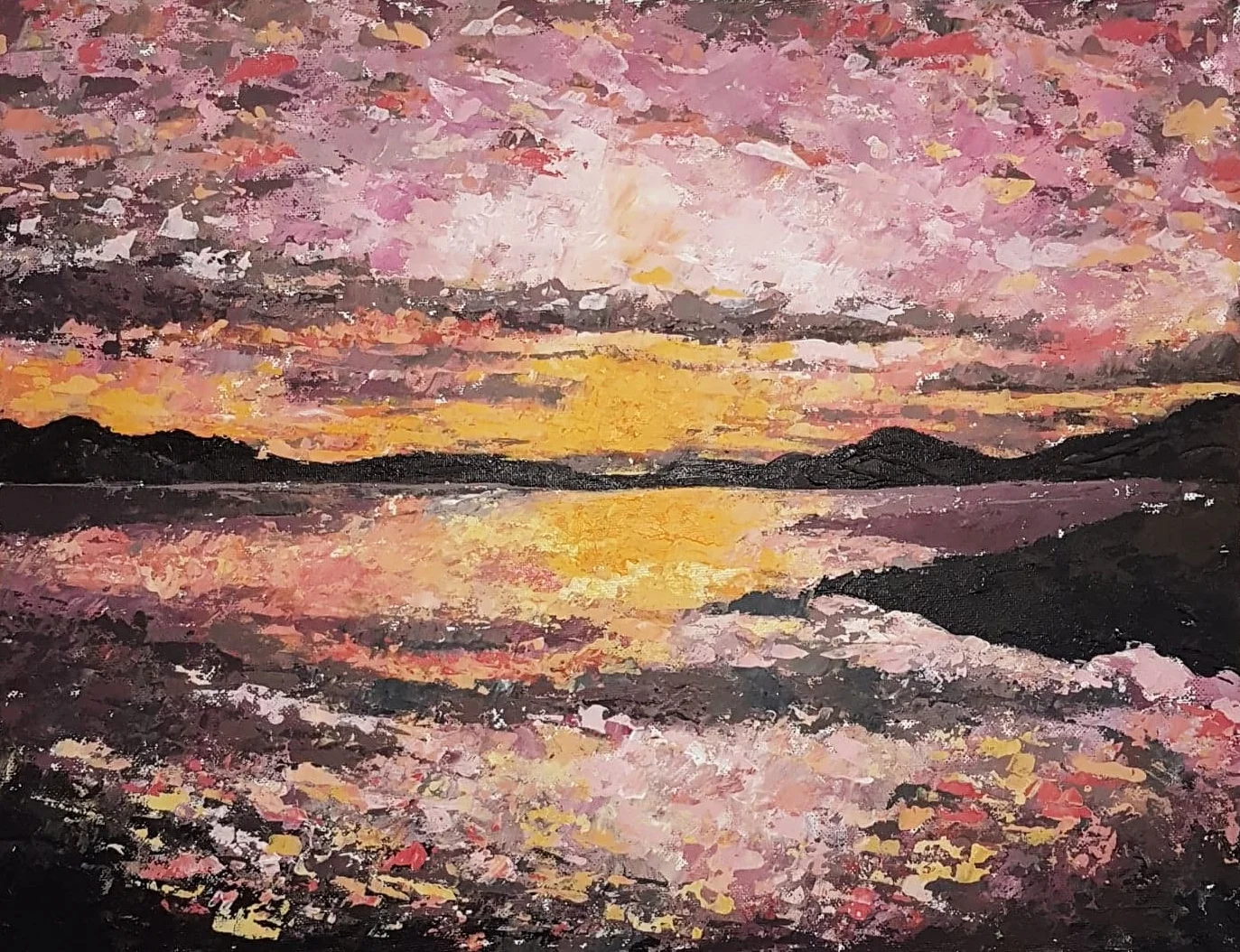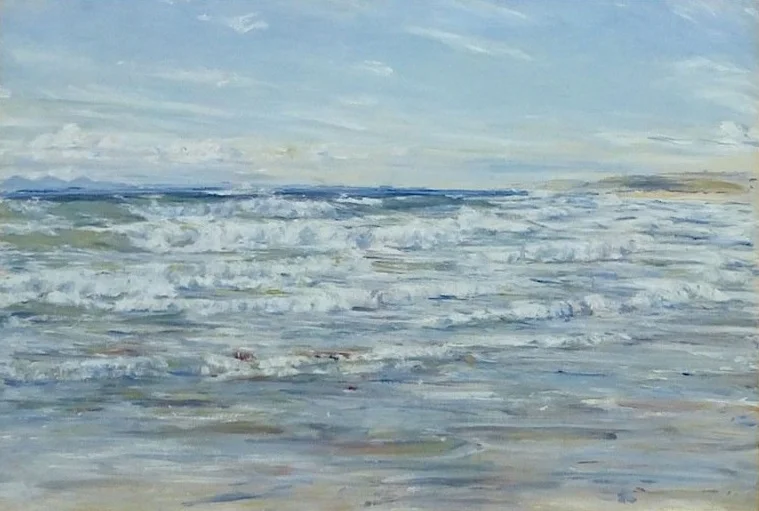Inspiration seems to be a tricky and elusive thing. For so many of us it can be flighty and inconsistent, kind of like sunshine in Scotland. I think many people view inspiration as a mad frenzy of activity and creativity from which amazing things are born. And sometimes it can be this way; sometimes I get the urge to create something right at that moment - I just have to get it out of my head into a physical form. Those bursts of creativity, though, are more about the activity than the product, they often stem from a restlessness in my soul.
More often than not, though, inspiration, to me at least, is more of a gentle nudge - a tiny glowing ember in the back of my mind. I’ll get an idea for something and note it down immediately in case I forget, but, usually the ideas sit at the back of my mind, on the edge of my consciousness for days, weeks and months before they come to fruition. I like to ponder over ideas, flip them upside down, think about the process and the outcome, incorporate other ideas, and think about mediums and messages.
As defined by Oxford Dictionaries, inspiration is, “The process of being mentally stimulated to do or feel something, especially to do something creative.” Historically, in Greek, Latin and Norse cultures, inspiration was seen as a gift from the gods. The inspired person would be given access to the thoughts of the divine and would no longer be in control of their (the artists’ or poets’) creation. These episodes of inspiration were seen as a frenzy or ‘ecstasy.’ French Renaissance poets also ascribed their inspiration to the divine. Pontus de Tyard described four different categories of heavenly inspiration: “(1) poetic fury, gift of the Muses; (2) knowledge of religious mysteries, through Bacchus; (3) prophecy and divination through Apollo; (4) inspiration brought on by Venus/Eros.”
It wasn’t until the 1700's that inspiration was separated from the divine and located within the mind. John Locke suggested that although entirely random, inspiration was a “natural association of ideas and sudden unison of thought.” While Edward Young described inspiration as “the god within,” Ralph Waldo Emerson and Percy Bysshe Shelley viewed it as “madness and irrationality.” Sigmund Freud decided that inspiration came from within the psyche as a result of psychological conflict, a more scientific way of saying ‘mad frenzy.’ In response to Freud’s analysis artists of the Surrealist movement attempted to tap into the unconscious; they used dream diaries, automatic writing, Ouija boards and poetry. Carl Gustav Jung suggested that artists are “attuned to something impersonal, something outside of the individual experience.”
In their study, ‘Imitation, Inspiration, and Creation: Cognitive Process of Creative Drawing by Copying Others’ Artworks,’ Takeshi Okada and Kentaro Ishibashi sought to understand the “cognitive processes underlying creative inspiration.” They found that participants were inspired to produce new and unique artwork having studied another unfamiliar artists’ work. Okada and Ishibashi suggest that exposure to unfamiliar artwork relaxes ‘cognitive constraints’ and inspires new perspectives.
Another study by Todd M Thrash and Andrew J Elliot found, among other things, that inspiration is uncontrollable, subjective, and linked to ”psychological resources, including self-efficacy, self-esteem and optimism.” People who have more instances of feeling inspired also feel they are more creative. They found that those who are open-minded about feeling inspired were more likely to experience inspiration. “Mastery of work, absorption, creativity, perceived competence, self-esteem, and optimism were all consequences of inspiration, suggesting that inspiration facilitates flow, creativity, and important psychological resources.”
Inspiration is clearly a significant component to creativity; “Inspiration transforms a person from experiencing a culture of apathy to experiencing a world of possibility.” My main source of inspiration has always been nature, in particular, Scottish landscape. I grew up on the North coast of Scotland where there wasn’t much to do except enjoy the scenery – the connection between the people and the land/sea is so ingrained in Northern Scottish culture it is impossible not to love it. You might have noticed that most of my acrylic paintings are skyscapes and seascapes; these are all based on real references from Scotland, the colours and shapes in the sky have always fascinated me. I am in constant awe of this planet that we call home. The more that is discovered through science about planet earth, the more in awe I seem to get. If you think about the massively wide diversity of life that grows here, in plants, animals, land, water and air, it’s hard not to be inspired.
I feel such affinity for this planet; when I think about all the damage humans have done to the environment I feel physical pain and sadness as though I were feeling the miners digging into my own being and the gas clogging my own air. My focus on natural untouched landscapes, mostly of the Scottish highlands, is driven partly through extreme admiration for those places, and partly through the hope that by focusing on these wild spaces I can raise awareness of global warming, climate change and environmental disaster. I gravitate towards natural inspirations because I hope that people will see by work and be struck by the desire to preserve and protect wild natural spaces and animals.
I am also inspired by other artists, everyday life and culture. One of my absolute favourite paintings is William McTaggart’s ‘And All The Choral Waters Sang.’ At the time, he was criticised for painting so loosely that parts of the blank canvas could be seen but I love how bold he was with this painting. I have been to visit it many times in Dundee’s McManus Gallery and every time I see it I’m struck with how real it seems. The waves come alive, I can hear the gulls cry and feel the wind lash my face with salty spray. I will always aspire to paint such a powerful painting as McTaggart did with this one.
Another of my favourite inspirational artists is Frida Kahlo. Her paintings are so raw and her use of symbolism shows the viewer exactly what she’s feeling. Her work was pure expression and feeling and it is glorious. I can’t help but be moved whenever I see her work.
Some current artists that inspire me include Frances Cannon, Derek Myers, Holly Exley, Minnie Small, Owen Hope, Elly Smallwood, Henrik Aa Uldalen, Alistair Horne, Krystle Wright, Irina Cumberland, Shawn Coss, Katie Jobling, Sarah Caudle, Anna Llorens, Marianne Lock and so many many many more.
It’s not always easy to find inspiration; some days are just completely blank. I keep a list of ideas of things I want to practice or things I want to draw for those days when I’m not following a particular idea. Always pay attention to your senses when you are out and about, you never know what can strike inspiration. As director Ian Rickson once said, “Inspiration can come at any time, even after it feels like you haven’t been getting anywhere. Keep your stamina up, don’t force too hard, and trust that you will find your way.”
<a href="https://www.bloglovin.com/blog/19568285/?claim=dyj3fa5rugq">Follow my blog with Bloglovin</a>



